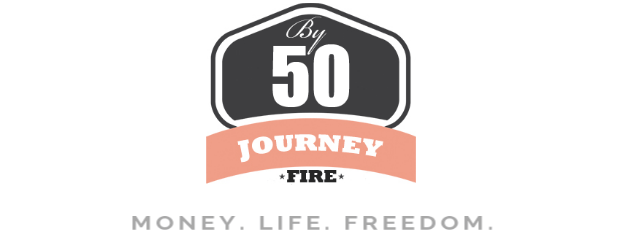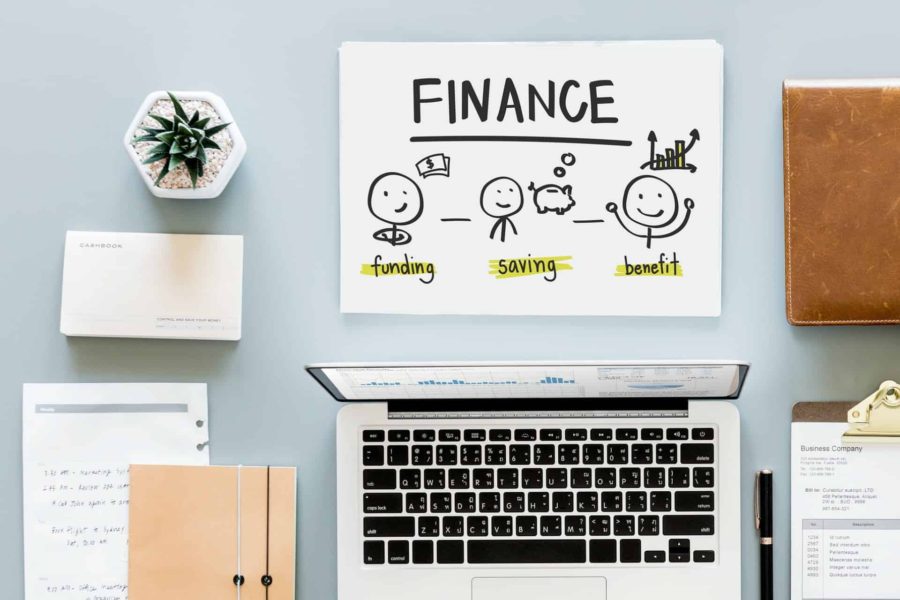Improve Your Finances In 5 Steps
We all want to improve our finances in our lives at some point. I wasn’t the best with money when I was younger because I didn’t have a specific financial goal. I’ve been a saver and a side hustler. However, I was missing an important component when it comes to building wealth. Because I never had a specific financial goal. When I finished college, I just knew that I needed to make a living somehow and to be financially responsible. I didn’t realize that I needed a plan and that I needed a specific financial goal. It was because I never thought I needed one so I never cared to even think about it. It took me years to realize how important having a goal is. We make money and we spend it. As long as we don’t overspend, it should be fine.
Shouldn’t it be fine?
No, it should not be fine. And it probably won’t be fine. A lot of people I know, actually almost all the people I know don’t have a specific financial plan. We make money, we spend it and we call it a day. Floating on life without a specific financial plan is a BAD idea. Most of the time we don’t even remember what we spend our money on. We only think that as long as we spend less than or equal to what we make we should be okay. A healthy relationship with money needs a whole lot of planning and that you need to have a specific goal. Without a specific financial plan, your road to financial success could end up being bumpier than it should be.

Think about your short-term, long-term, and ultimate financial goals. Map out your financial plan according to your current situation and plan out what you want to achieve in the future by breaking them up with short-term and long-term goals. By improving just one thing at a time, you will end up with great results. Whenever you have achieved a goal, re-evaluate the plan, adjust & improve, and just keep going. The success is waiting for you at the end. You’ll be glad to have a financial roadmap laid out. 😉
Once your goals are set. You’re now ready to take action. Don’t just have great goals but don’t do anything. Here are actionable steps to take to improve your financial health.
5 Steps to improve your finances:
1. Know your numbers
Do you know how much you make? Do you know how much of your deductions are on your paycheck? How much do you spend on food and clothing each month? How many times do you make impulse purchases each month? Knowing all these numbers will help you know yourself and in turn improve your behavior financially. The problem is that you don’t really know what you spend on and how much. You always wonder where your money goes. You NEED to know your numbers. Stop assuming and start tracking your numbers are the only way to get to know your purchasing habits.
- One, you need to know exactly how much you make. You probably know how much your salary or wage is. However, do you know how much you actually make after taxes and all deductions annually by not looking at your W-2? Breaking up your TAKE-HOME pay by monthly, weekly, daily and hourly is a good way to gauge your income. By knowing exactly how much you make, you probably wouldn’t want to spend $70 on a pair of jeans if it takes you a whole day to earn that much. You get the idea.
- The other is knowing your expenses. By tracking your expenses for a month or two, you’ll get an idea about your purchasing habits. You also need to categorize your expenses into groups; food, utilities, housing, transportation, entertainment, saving, debt payoff, etc.). After tracking and categorizing your expenses for a few months, look at your numbers, ask yourself if you spend your money wisely and then determine how it can be improved.
- There are great tools out there to help you track your expenses. I use Personal Capital. It’s a free web-based financial account aggregator. This tool helps me with managing our financial portfolio, tracking our net worth, analyzing investment fees & performance, and planning our retirement all in one place. I specifically use Personal Capital for tracking our transactions on a daily basis. The cash flow feature helps me determine how much we spend vs. how much money we have left each month.
- I also use a pen-and-paper method to write down how much we can spend on each category each month using a monthly planner book which can be found at dollar tree stores for $1 or less. Another great tool for tracking your spending is Mint. It’s also a web-based financial account aggregator. Mint, in my opinion, is good for budgeting (whereas Personal Capital is good for net worth & investment trackings). Mint can record your purchases and you can manually enter cash purchases (non-electronic transactions like using cash at a flea market, for example). You can also use Personal Capital to create your budget and set savings goals. I’ve been using Personal Capital since 2016. And I’m very happy with the Cash Flow and Net Worth tracking features. Because of this tool, we finally have an investment account and earn dividend income. The best part is Personal Capital if completely FREE.
2. Do a budget
Generally, when we hear the word “budget”, we think of penny-pinching and the limited shopping trips. You may not realize that we are already dealing with a budget in some ways. We make money and then we spend that money. That is called budgeting. What we really need is a real budget. Imagine a business or a restaurant without a budget. There’s no way to know its income, expense, and profit. The same holds true when it comes to personal finances. How long has it been since you earned your first paycheck without having a real budget in place? Now it’s time to create a real budget that is detailed and is realistic.
Once you figure out your take-home income and expenses, the next step is to create a realistic budget. The main idea is that you simply subtract your expenses from your income. If you get a negative number, then you need to gradually adjust your spending over time. Remember, your first-month budget does not need to be perfect. It takes time to get your budget right. Patience and self-discipline are keys. The reason for creating a budget in the first place is to help you identify your financial weaknesses and to improve your overall finances. Learn how to create your awesome budget here (plus get free printable budget worksheets!).
3. Get out of debt
First thing first, do you really want to get out of debt? If you do, read on. To get rid of debt for good, you really… REALLY want to get out of debt. Only YOU can make it happen. Because if you don’t want it bad enough, you’ll always find excuses to not pay down your debt. I believe you are committing to get rid of your debt since you’re reading my blog. While paying down high-interest rate consumer debt like credit card and personal loan debt is a no-brainer, a low-interest rate like a mortgage is an acceptable form of debt. A loan of an asset like a primary residence home or a rental house is considered a good debt by experts. It takes some consideration when it comes to paying off your mortgage. By now, you have a real budget in place, the next step is to tackle your debt. Here are ways to speed up your debt payoff:
- Try to pay more than the minimum monthly payment. Mathematically, paying more than the minimum payment speeds up your loan payoff considerably. It could take a decade or more if you just pay a minimum payment even on a small balance. Paying just a minimum payment costs you a whole lot more on interest charges.
- Try not to add any more debt. Use cash or debit wherever possible. Keep swiping your credit card will just make your debt hole deeper.
- When you can’t keep up with your payments, consider increasing your income by selling stuff and/or side hustling. The simplest way to tackle your debt is to reduce your expense though. If you can do both, that’s fantastic. I know it’s easier said than done. We were a single income family for years, it took us a very long time to get out of debt. A future post “How to survive financially on one income”.
- Try to reduce your household expenses so that you have more money to use toward debt paydown. Do whatever it takes to have more money for debt payoff. If you are eating out twice a month, consider reducing it to once a month. Is your cable or satellite TV necessary? You may be surprised at how much you don’t miss it at all after you cut the service.
4. Get adequate insurance
Now, you know all of your numbers, you are good at budgeting and got rid of all of your debt. You’ve worked hard to achieve those steps so your financial success needs to be insured/protected. There are a few more steps you need to pay attention to if you want to get all of your finance squared away. Life is unpredictable. Accidents and unexpected events do happen. Experts say during a person’s lifetime, a life-changing event does occur at least once in every decade. You generally have auto insurance, health insurance, and homeowners’ insurance/renter insurance, or maybe a group life insurance through your employer (if you don’t have these basic insurances, then try to get them). Consider getting adequate insurance to protect your life and your income like umbrella policy insurance, term life insurance, disability insurance, and long-term care insurance.
So what kind of insurance do I need besides auto, health, and homeowners’/renter insurances?
- To protect your income lost. On top of your auto, health, and homeowners’/renter insurances, getting a term life insurance is the best you could do financially for your family if something ever happens to you. If you’re the main or the only income provider, this is a must. There are two main kinds of life insurance; a term life insurance and a whole life insurance. A whole life insurance policy covers you for life. Some whole life insurance policies offer a benefit of cash value accumulation. However, the premium is insanely more expensive than a term life insurance. A term life insurance policy covers you for a set period of time. It’s crucial to consider which one is the best fit for you and your family. I personally have only term life insurance policies. It’s much more affordable and I do hope that by the end of my policies, my family will no longer need my income (meaning house is paid-off, kids have finished college, for example).
- To protect your ability to work. Life always throws challenges at us. A few of those challenges are tragic accidents and illnesses. What would your family do if something like that happens to you and you can no longer work? Consider getting disability insurance (you could do this as an add-on option on your life insurance policy also).
- To protect your asset/wealth when you are older. It’s sad but true. We all are getting old. Long-term care insurance helps you and/or your family with care expenses and healthcare costs when you’re at your old age. I personally consider getting long-term care insurance when I hit 60.
5. Save for rainy days & retirement
You’ve gone so far. At this point, you understand your financial weaknesses & strengths. You are mastered of budgeting and are living debt-free. Your assets, health, and ability to work are insured.
The last but not least, saving.
Saving is as important as the previous 4 steps we have learned. It provides a safety net in case of an emergency. You know, my great grandma always said to save money for a rainy day. She’s darn right. It rains every now and then. Experts say having an emergency fund of 3-6 months’ worth of living expenses is ideal. Some even say a year’s worth of living expenses is recommended if you own a home, have kids, and are in an insecure job.
Setting money aside for rainy days is easier if it’s done automatically. Try setting up an automatic money transfer to your savings account periodically. Start small with $20-25 a month. Then regularly increase the amount when you feel comfortable until you’ve reached your emergency fund goal. Don’t forget to replenish the fund whenever it gets used.
 Retirement saving needs to become a financial priority instead of an afterthought. Planning for retirement is not for old people. The best time to plan for your retirement savings is when you begin your career or when you earn your first paycheck or even before you enter the workforce. You know you don’t want to miss the boat (meaning you’ve missed out on the power of compound interest). Compounding interest takes time to compound. Keep in mind, it’s never too late to start. The second best time to plan for your retirement savings is now.
Retirement saving needs to become a financial priority instead of an afterthought. Planning for retirement is not for old people. The best time to plan for your retirement savings is when you begin your career or when you earn your first paycheck or even before you enter the workforce. You know you don’t want to miss the boat (meaning you’ve missed out on the power of compound interest). Compounding interest takes time to compound. Keep in mind, it’s never too late to start. The second best time to plan for your retirement savings is now.
Most people think that they don’t have enough money left to save. Retirement does creep up on you quickly. If your employer offers a retirement plan like 401(k), 403(b), 457(b), TSP, whatever it is, take full advantage of it. If your employer offers a matching contribution, then you are leaving free money on the table if you don’t participate. These accounts also offer a tax break. If you’re self-employed or your employer does not offer a retirement plan, then open an IRA and/or a Roth-IRA instead.
For those who already participate in an employer-sponsored retirement plan and want to rock at your retirement, open an additional IRA and/or a Roth-IRA will sure put your retirement to the next level.
Once you take full advantage of your tax-advantaged retirement accounts. You may want to diversify your nest egg by investing in a low-cost index fund like the S&P 500 through a taxable brokerage account. I personally use Vanguard and highly recommend them.
Ideally, you should save first then spend whatever left. You work hard for your money so remember to pay yourself first.

There you have it. It takes years to get your financial ducks in a row. Be realistic and be patient with yourself. You’re already halfway through your financial success since you’re reading my blog. I believe you can.
Any other tips you can share?












4 Comments
Leave your reply.